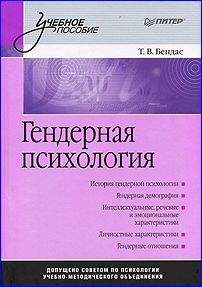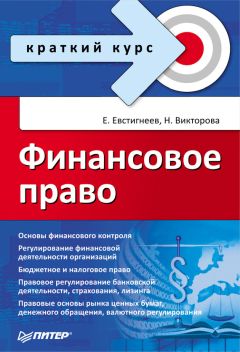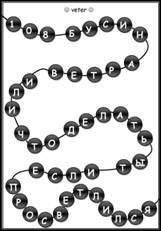Станислав Гроф - Холотропное дыхание. Новый подход к самоисследованию и терапии
61. Huxley, A. 1945. Perennial Philosophy. New York and London: Harper and Brothers. (В русском переводе: О. Хаксли, «Вечная философия»», М., «Рефл-Бук» – «Ваклер», 1997)
62. Jilek, W. J. 1974. Salish Indian Mental Health and Culture Change: Psychohygienic and Therapeutic Aspects of the Guardian Spirit Ceremonial.
Toronto and Montreal: Holt, Rinehart, and Winston of Canada.
63. Jilek, W. J. 1982. “Altered States of Consciousness in North American Indian Ceremonials.” Ethos 10:326–343.
64. Jung, C.G. 1959a. The Archetypes of the Collective Unconscious. Collective Works, Vol.9.1. Bollingen Series 20., Princeton, NJ: Princeton University Press. (В русском переводе: К. Г. Юнг, «Об архетипах коллективного бессознательного», в сб. К. Г. Юнг, «Архетип и символ», М., «Ренессанс», 1991)
65. Jung, C.G. 1959b. Mandala Symbolism. Translated by R. F. C. Hull. Bollingen Series. Princeton: Princeton University Press.
66. Jung, C. G. 1961. Memories, Dreams, Reflections. New York: Pantheon. (В русском переводе: К. Г. Юнг, «Воспоминания, сновидения, размышления», Киев, «Air-Land»,1994)
67. Jung, C.G. 2009. The Red Book. New York: W.W.Norton and Company.
68. Kalff, D. 2003. Sandplay: A Psychotherapeutic Approach to the Psyche. Cloverdale, CA: Temenos Press.
69. Kamiya, J. 1969. “Operant Control of the EEG Alpha Rhythm and Some of Its Effects on Consciousness. In: Altered States of Consciousness (C. T. Tart, ed.). (pp. 489–501). New York: Wiley.
70. Katz, R. 1976. Boiling Energy: Community Healing Among the Kalahari Kung. Boston: Harvard University Press.
71. Kellogg, J. 1977a. ”The Use of the Mandala in Psychological Evaluation and Treatment.” American Journal of Art Therapy 16:123.
72. Kellogg, J. 1977b. “The Meaning of Color and Shape in Mandalas.” American Journal of Art Therapy 16, 123–126.
73. Kellogg, J. 1978. Mandala: The Path of Beauty. Baltimore, MD: Mandala Assessment and Research Institute.
74. Kennell. J. H. and Klaus, M. 1998. “Parental Bonding: Recent Observations That Alter Perinatal Care.” Pediatrics in Review 19:4–2.
75. Klaus, M., Kennell, J.H. and Klaus, P. H. 1995. Bonding: Building the Foundations of Secure Attachment and Independence. Reading, MA: Addison Wesley.
76. Klaus, M. H. 1976. The Impact of Early Separation: The Impact of Early Separation or Loss on Family Development. St. Louis, MI: Mosby Publications.
77. Klein, D. F., Zitrin, C. M. and Woerner, M. 1978. “Antidepressants, Anxiety, Panic, and Phobia.” In: Psychopharmacology: A Generation of Progress. (eds. M. A. Lipton, A. DiMascio, and K. F. Killiam. New York: Raven Press.
78. Laszlo, E. 1993. The Creative Cosmos. Edinburgh: Floris Books.
79. Lee, R. and DeVore, I. 1999. Kalahari Hunter-Gatherers: Studies of the Kung San and Their Neighbors. Cambridge, MA: Harvard University Press.
80. Lum, L.C. 1987. “Hyperventilation Syndrome in Medicine and Psychiatry: A Review.” Journal of the Royal Society of Medicine 80 (4): 229–231.
81. Laszlo, E. 2004. Science and the Akashic Field: An Integral Theory of Everything. Rochester, VT: Inner Traditions.
82. Mahl, G. F. 1949. “The Effect of Chronic Fear on Gastric Secretion.” Psychosom. Med. 11:30.
83. Mahr, A. 1999. Das wissende Feld: Familienaufstellung als geistig energetisches Heilen (The Knowing Field: Family Constellation as Spiritual and Energetic Healing). Munich: Koesel Verlag.
84. Martin, J. 1965. “LSD Analysis.” Lecture and film presented at the Second International Conference on the Use of LSD in Psychotherapy held on May 8-12, 1965, at South Oaks Hospital, Amityville, New York. Paper published in: The Use of LSD in Psychotherapy and Alcoholism (H. A. Abramson, ed.). Indianapolis, IN: Bobbs-Merrill, pp. 223–238.
85. Maslow, A. 1962. Toward A Psychology of Being. Princeton: Van Nostrand.
86. Maslow, A. 1964. Religions, Values, and Peak Experiences. Columbus: Ohio State University Press.
87. Maslow, A. 1969. “A Theory of Metamotivation: The Biological Rooting of the Value of Life.” In: Readings in Humanistic Psychology, ed. A.J. Sutich and M.A. Vich. New York: The Free Press.
88. Maxfield, M. C. 1990. “Effects of Rhythmic Drumming on EEG and Subjective Experience.” Unpublished Doctoral Dissertation. Institute of Transpersonal Psychology, Menlo Park, CA.
89. Maxfield, M. C. 1994. “The Journey of the Drum.” Re-Vision Journal 16:148–156.
90. McCririck, P. 1966. “The Importance of Fusion in Therapy and Maturation.” Unpublished mimeographed manuscript.
91. McGee et al. 1984. “Unexperienced Experience: A Clinical Reappraisal of the Theory of Repression and Traumatic Neurosis.” Irish Journal of Psychotherapy 3:7.
92. Moreno, J. L. 1973. Gruppenpsychotherapie und Psychodrama (Group Psychotherapy and Psychodrama). Stuttgart: Thieme Verlag.
93. Moreno, J. L. 1976. “Psychodrama and Group Psychotherapy.” Annals of the New York Academy of Sciences 49 (6^902–903.
94. Neher, A, 1961. “Auditory Driving Observed with Scalp Electrodes in Normal Subjects.” Electroencephalography and Clinical Neurophysiology 13:449–451.
95. Neher, A. 1962. “A Physiological Explanation of Unusual Behavior Involving Drums.” Human Biology 14:151–160.
96. Orr, L. and Ray, S. 1977. Rebirthing in the New Age. Millbrae, CA: Celestial Arts.
97. Perls, F., Hefferline, R. F. and Goodman, P. 1951. Gestalt Therapy: Excitement and Growth in the Human Personality. New York: Julian Press.
98. Perls, F. 1973. Gestalt Approach and Witness to Therapy. Palo Alto, CA: Science and Behavior Books. (В русском переводе: Ф. Перлз, «Гештальт-подход и Свидетель терапии», М.: «Либрис», 1996)
99. Perls, F. 1976. Gestalt Therapy Verbatim. New York: Bantam Books.
100. Pribram, K. 1971. Languages of the Brain. Englewood Cliffs, N.J.: Prentice Hall.
101. Ramacharaka (William Walker Atkinson). 1903. The Science of Breath. London:
L. N.Fowler and Company, Ltd.
102. Reich, W. 1949. Character Analysis. New York: Noonday Press. (В русском переводе: В.Райх, «Характеро-анализ», М. «Терра-КК»-«Республика», 1999).
103. Reich, W. 1961. The Function of the Orgasm: Sex-Economic Problems of Biological Energy. New York: Farrar, Strauss, and Giroux.
104. Reich, W. 1970. Mass Psychology of Fascism. New York: Simon and Schuster. (В русском переводе: В. Райх, «Психология масс и фашизм», СПб: «Университетская книга», 1997)
105. Rider, M. 1985. “Entrainment Mechanisms Are Involved in Pain Reduction, Muscle Relaxation, and Music-Mediated Imagery.” Journal of Music Therapy 22:183–192.
106. Ring, K. and Valarino, E. E. 1998. Lessons from the Light: What We Can Learn from the Near-Death Experience. New York: Plenum Press.
107. Ring, K. and Cooper, S. 1999. Mindsight: Near-Death and Out-of-Body Experiences in the Blind. Palo Alto, CA: William James Center for Consciousness Studies.
108. Ross, C. A. 1989. Multiple Personality Disorder: Diagnosis, Clinical Features, and Treatment. New York: John Wiley & Sons.
109. Sabom, M. 1982. Recollections of Death: A Medical Investigation. New York: Harper and Row Publications.
110. Sabom, M. 1998. Light and Death: One Doctor» s Fascinating Accounts of Near-Death Experiences. Grand Rapids, MI: Zondervan Church Source.
111. Selye H. 1950. The Physiology and Pathology of Exposure to Stress. Montreal: Acta. (В русском переводе: Г. Селье, «Физиология и патология стресса)
112. Shapiro, F. 2001. Eye Movement Desensitization and Reprocessing: Basic Principles, Protocols, and Procedures. New York: Guilford Press.
113. Shapiro, F. 2002. EMDR As An Integrative Psychotherapy Approach: Experts of Diverse Orientations Explore the Paradigm Prism. Washington, DC: American Psychological Association Books.
114. Sheldrake, R. 1981. A New Science of Life: The Hypothesis of Formative Causation. Los Angeles, CA: J. P. Tarcher.
115. Sheldrake, R. 1988. The Presence of the Past: Morphic Resonance and the Habits of Nature. New York: Times Books.
116. Sparks, T. 1989. Doing Not Doing: A Facilitator» s Guide to Holotropic Breathwork. Mill Valley,CA: Holotropic Books and Music.
117. Stoll, W. A. 1947. “LSD, ein Phantastikum aus der Mutterkorngruppe” (LSD, a Fantasticum from the Group of Ergot Alkaloids). Schweizer Archiv für Neurologie und Psychiatrie 60: 279.
118. Stone, H. and Stone, S. 1989. Embracing Our Selves: The Voice Dialogue Manual. Mill Valley, CA: Nataraj Publishing.
119. Sutich, A. 1976. “The Emergence of the Transpersonal Orientation: A Personal Account.” Journal of Transpersonal Psychology 8: 5-19.
120. Taylor, K. 1991. The Holotropic Breathwork Facilitator» s Manual. Santa Cruz, CA: Hanford Mead Publishers.
121. Taylor, K. 1994. The Breathwork Experience: Exploration and Healing in NonOrdinary States of Consciousness. Santa Cruz, CA: Hanford Mead Publishers.
122. Taylor, K. 1995. Ethics of Caring: Honoring the Web of Life in Our Professional Healing Relationships. Santa Cruz, CA: Hanford Mead Publishers.
123. Taylor, K. 2003. Exploring Holotropic Breathwork: Selected Articles from a Decade of the Inner Door. Santa Cruz, CA: Hanford Mead Publishers.
124. Teilhard de Chardin, P. 1964. The Future of Man. New York: Harper and Row.
125. Teilhard de Chardin, P. 1975. The Human Phenomenon. New York: Harper and Row. (В русском переводе: П. Тейяр де Шарден, «Феномен человека»)
126. Tomatis, A. A. 1991. The Conscious Ear: My Life of Transformation through Listening. Barrytown, NY: Station Hill Press.
127. Turner, V. W. 1969. The Ritual Process: Structure and Anti-Structure. Chicago: Aldine.
128. Turner, V. W. 1974. Dramas, Fields, and Metaphors: Symbolic Action in Human Society. Ithaca, NY: Cornell University Press.
129. Vithoulkas, G. 1980. The Science of Homeopathy. New York: Grove Press.
130. Weil, A. 1972. The Natural Mind. Boston: Houghton Mifflin.
131. Whitwell, G. E. 1999. “The Importance of Prenatal Sound and Music.” Journal of Prenatal and Perinatal Psychology and Health 13 (3–4), 255–262.
132. Wilber, K. 1980. The Atman Project: A Transpersonal View of Human Development. Wheaton, IL: Theosophical Publishing House. (В русском переводе: К. Уилбер, «Проект Атман», М., Изд-во Института Трансперсональной психологии – «АСТ», 2004
133. Wilber, K. 1982. A Sociable God. New York: McGraw-Hill.
134. Wolff, S. and Wolff, H. 1947: Human Gastric Function. London: Oxford University Press.
135. Zaritsky, M.G. 1998. “Complex Method of Treating Alcoholic Patients: Using Medichronal Microwave Resonance Therapy and Holotropic Breathwork.” Lik Sprava 7:126:32.
136.
137. Исследования Холотропного Дыхания:
138. Ashauer, B. and Yensen, R. 1988. “Healing Potential of Non-Ordinary States: Observations from Holotropic Breathwork.” Presented at the Ninth International Transpersonal Conference in Santa Rosa, CA, entitled “The Transpersonal Vision: Past, Present and Future,” October 9 – 14.
139. Binarova, D. 2003. “The Effect of Holotropic Breathwork on Personality.” Ceska a slovenska psychiatrie. 99:410–414.
140. Binns, S. 1997. “Grof» s Perinatal Matrix Theory: Initial Empirical Verification.” Honors Year Dissertation. Department of Psychology, Australian Catholic University. Victoria, Australia.
141. Brewerton, T. et al. 2008. “Long-Term Abstinence Following Breathwork As Adjunctive Treatment of Substance Dependence.” Presented at the Tenth Annual Meeting of the International Society of Addiction Medicine in Cape Town, South Africa.
142. Brouillette, G. 1997. “Reported Effects of Holotropic Breathwork: An Integrative Technique for Healing and Personal Change.” Ph.D. dissertation.
Proquest Dissertations and Theses 1997. Section 0669, Part 0622, 375 pages; United States – California: Institute of Transpersonal Psychology. Publication Number: AAT DP14336.
143. Bubeev, Y. A. and Kozlov. 2001 a. “Experimental Psychophysiological and Neurophysiological Study of Intensive Breathing.” In: Holotropic Breathwork: Theory, Practice, Researches, Clinical Applications (V. Maykov and V. Kozlov, eds.). Moscow: Publications of the Institute of Transpersonal Psychology. (Бубеев Ю.А., Козлов В.В. «Экспериментальное психофизиологическое и нейрофизиологическое изучение интенсивного дыхания» В сб. «Холотропное Дыхание: Теория, практика, исследования, клиническое применение» под редакцией В.В. Козлова и В.В. Майкова, Москва, Изд-во Трансперсонального Института.
144. Bubeev, Y. A. and Kozlov. 2001 b. “Experimental Studies of the Influence of Intensive Breathing on An Individual and Group.” In: Holotropic Breathwork: Theory, Practice, Researches, Clinical Applications (V. Maykov and V. Kozlov, eds.). Moscow: Publications of the Institute of Transpersonal Psychology. (Бубеев Ю.А., Козлов В.В. «Экспериментальные исследования влияния интенсивного дыхания на индивида и группу». В сб. «Холотропное Дыхание: Теория, практика, исследования, клиническое применение» под редакцией В.В. Козлова и В.В. Майкова, Москва, Изд-во Трансперсонального Института.
145. Byford, C. L. 1991. “Holotropic Breathwork: A Potential Therapeutic Intervention for Post-Traumatic Stress Disorder in Female Incest Victims.”
M.T.P. dissertation. Proquest Dissertations and Theses. Section 0669, Part 0621, 119 pages; United States – California: Institute of Transpersonal Psychology. Publication Number: AAT EP15296.
146. Cervelli, R. L. 2009. “An Intuitive Inquiry into Experiences Arising out of the Holotropic Breathwork Technique and Its Integral Mandala Artwork: The Potential for Self-Actualization.” Doctoral Dissertation. Institute of Transpersonal Psychology Palo Alto, California, November 6.
147. Crowley, N. 2005. “Holotropic Breathwork – Healing Through a Non-ordinary State of Consciousness.” Paper based on a talk delivered by Dr. Crowley on May 9, 2005, at a special interest group meeting of the Royal College of Psychiatrists, United Kingdom.
148. Edwards, L. 1999. “Use of Hypnosis and Non-Ordinary States of Consciousness in Facilitating Significant Psychotherapeutic Change.” The Australian Journal of Clinical Hypnotherapy and Hypnosis. September issue.
149. Everett, G. 2001. “The Healing Potential of Non-Ordinary States of Consciousness.” Ph.D. dissertation, 251 pages. Australia – Norfolk Island. School of Psychology, College of Social Science, Greenwich University.




